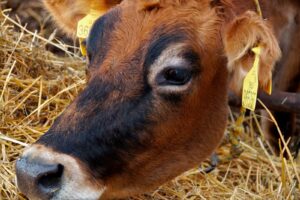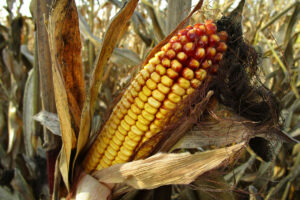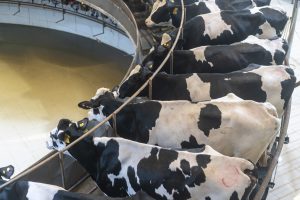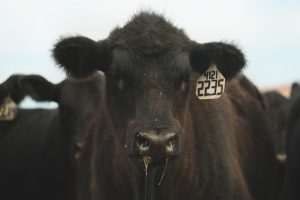Alvaro Garcia
Molds that produce mycotoxins are present in the environment and will grow readily on feedstuffs given the right conditions. The production of these mycotoxins in feeds is expressed mainly under conditions of environmental stress. The three more prevalent genus of molds are Aspergillus, Fusarium, and Penicillium.
Aspergillus are considered the most dangerous to humans since two species, A. flavus and A. parasiticus, produce aflatoxin B1 one of the most potent natural human carcinogen. Aside from its carcinogenic properties, Aflatoxin B1 has also hepatotoxic, nephrotoxic and immunosuppressive effects.
Other Aspergillus species are A. nomius, A. pseudonomius, A. arachidicola, A. bombycis, A. minisclerotigenes, A. pseudotamarii, and A. togoensis. Rumen microorganisms can degrade up to 42% of the aflatoxin B1 ingested, but they are also capable of producing aflatoxicol, another toxigenic metabolite.
Once aflatoxin B1 is absorbed in the intestine and reaches the cow’s liver, it is metabolized into an epoxide known as aflatoxin M1. Aflatoxin M1 can also end-up in the rumen through the rumino-hepatic circulation. Once aflatoxin M1 enters the circulation it can show up in milk which is of concern since it is also a potent human carcinogen.
The toxicity of aflatoxicol and aflatoxin M1 are like that of B1, and they are readily absorbed in the intestine. Therefore, even when B1 can be partially degraded in the rumen to aflatoxicol, and then transformed in the liver to M1, the toxic end-result is similar.
There are molecular techniques used to differentiate the different aflatoxins present based on the use of the gene of calmodulin, the fragments corresponding to the region of the internal transcribed spacers and the regulatory gene of the aflatoxin biosynthetic pathway.
A recent experiment conducted in Mexico (Rangel-Muñoz et al. 2020) looked at this molecular and morphological characterization of aflatoxigenic isolates of Aspergillus flavus obtained from dairies. A dairy farm with an average of 2,749 Holstein cows in milk, was followed for 24 months. Milking was performed with an automated equipment twice a day and the production averaged 28.1 L per cow daily.
A TMR was formulated in accordance with the cow’s nutrient requirements which included corn silage, concentrate, canola, soybeans, corn, rolled sorghum, soybean meal, corn distillers dried grains, cottonseeds, alfalfa and oats hay, and a vitamin-mineral premix. One-kg feed samples (n = 288) were obtained of the TMR, concentrate and corn silage then dried, ground, and refrigerated until processing.
Milk samples (0.5 L; n = 288) were obtained from the bulk tank from the high, medium and low production groups during the morning and evening milking. Five agricultural plots were sampled with the help of a soil core sampler, choosing four sampling points in each plot of land and taking five 100 g-subsamples at 30 cm depth in each point.
Of the 88 isolates detected morphologically as Aspergillus spp. the species identified were A. oryzae (45.5 %), A. niger (10.2), A. ochraceus (3.4 %), A. pseudodeflectus (4.5 %), A. ustus (10.2 %), A. flavus (6.8 %), A. versicolor (5.6 %), A. nidulans (5.6 %), A. sublatus (4.5 %) and A. sydowii (3.4 %).
Of the 288 food samples, 286 (99.3 %) had detectable levels of aflatoxins (18.5 ± 3.7 μg/kg), and of them 10.4% exceeded the action level suggested by both the FDA and Mexican regulatory agencies (20 μg/kg). Aflatoxin M1 (0.021 μg/kg) was detected in 39.9% of the 183 milk samples, and 12.0% exceeded the maximum limit allowed by the agencies (0.050 μg/kg).
The highest aflatoxin incidence was observed during summer and fall, compared to winter and spring (17.4 ± 3.2 and 14.8 ± 1.6 vs 8.1 ± 0.5 and 5.9 ± 0.5 μg/kg, respectively). The concentration of aflatoxin M1 was directly correlated with that of aflatoxin in the TMR. It was also correlated with how much milk the cows were producing and their TMR intake. Cows consumed on average 621 μg of aflatoxins in 42 kg of TMR (daily intake) and produced 26.2 L of milk with 0.603 μg of aflatoxin M1.
Cows producing more milk ate more feed and this resulted in higher intake of aflatoxin (658 μg/cow/day), which also resulted in the presence of aflatoxin M1 in milk compared to the medium and low production groups (0.22 μg/cow/d).
Compared to the other genus Aspergillus had the highest occurrence (31%), followed by Penicillium (13.8%) and then Fusarium (12.7 %). A. flavus was isolated from the feed of dairy cows at a ratio of 6.8% of the total identified Aspergillus species (6/88). This species however was not identified on the soil intended for fodder corn and oats.
This study proved the occurrence of A. flavus in corn silage and in turn the TMR, which led to aflatoxin contamination of almost all diets, as well the presence of aflatoxin M1 in milk. Dairy cows were able to metabolize and/or eliminate more than 99% of aflatoxin present in their diet through routes other than milk.
Referencia
Rangel-Muñoz, E., Valdivia-Flores, A., Moreno-Rico, O., Hernández-Delgado, S., Cruz-Vázquez, C., De-Luna-López, M., Quezada, T., Ortiz-Martínez, R., Máyek-Pérez, N. 2020. Characterization of Aspergillus flavus and quantification of aflatoxins in feed and raw milk of cows in Aguascalientes, Mexico. Revista Mexicana de Ciencias Pecuarias. 11. 435-454.
© 2020 Dairy Knowledge Center. All Rights Reserved.









